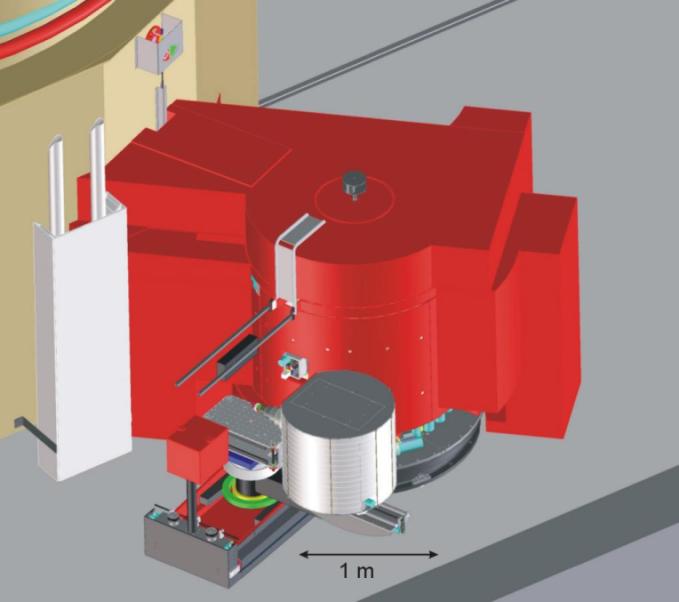The BT8 Residual Stress Diffractometer

The Residual Stress Diffractometer is used for measuring lattice strains and preferred orientation (texture), for studying
residual and applied stress in engineering materials, and the effect of materials processing on preferred orientation.
Designed for versatility, the heart of the instrument is a rotating drum that allows - together with three monochromators -
to select wavelengths from 0.8 to 3.2 Å. This enables the measurement of d-spacings anywhere between 0.56 Å up to 2.26
Å at
the optimal 2θ=90º. The size of the sampling volumes used on a regular basis varies from 1 mm3 to 200
mm3. The double focusing
Si-Monochromator has a variable curvature which allows the optimization of the measurement for intensity (texture), for resolution
(peak broadening) or for Figure of Merit (strain). Beams with minimal or without higher order contamination can also be produced,
either by using the Si(311) monochromator reflection which has no second order, or by using a pyrolytic graphite filter. The
instrumental background is low and, depending on material, pathlength and gauge volume, peak to background ratios typically
range from 1 (steel, 80 mm path, 125 mm3 gauge volume) to 300 (steel, 8 mm path, 8 mm3 gauge volume).
The detector system consists of an Ordela 1150 position sensitive neutron detector with an angular opening of approx. 8º .
Beam time for BT8 is granted quickly, either through the beam time request form
http://www.ncnr.nist.gov/cgi-bin/cnrfprop.html?REQORPROP=R or on an informal basis by contacting a member
of the residual stress group. Measurements are done either by the applicant(s) or - on a collaborative basis - by members
of the residual stress group. Depending on the extent of the proposal, we are encouraging applicants to conduct measurements
themselves after completing appropriate training and orientation with full support by the residual stress group.
For questions and beam time requests please contact:
Thomas Gnaeupel-Herold, 301-975-5380, tg-h@nist.gov
Henry J. Prask, 301-975-6226, hank@nist.gov
Ancillary Equipment
Monochromator
The Residual Stress Measurement Program
Last modified 03-April-2003 by website owner: NCNR (attn: )


